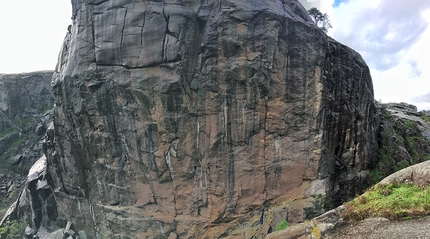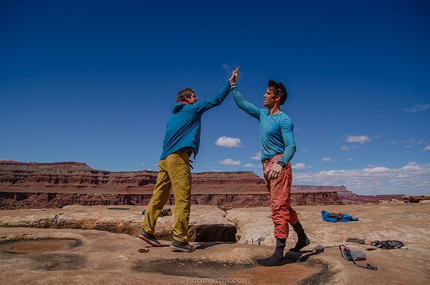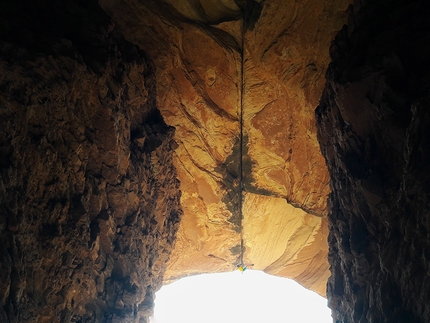Crack climbing - Mastering the skills and techniques with Pete Whittaker
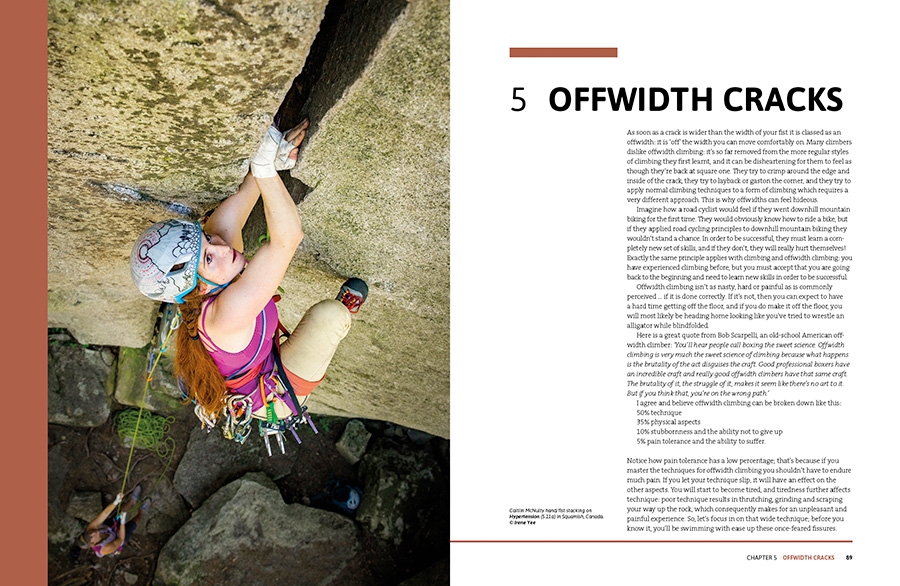
 1 / 15
1 / 15 Pete Whittaker
Pete Whittaker
Britain's Pete Whittaker is one of the world's most experienced trad climbers with cutting-edge first ascents and hard repeats to his name. These span the spectrum, from short and desperate gritstone E9's and E10's such as Dynamics of Change (E9 7a), Bigger Baron (E10 7a) and Sleepy Hollow (E10 7a), to huge big walls such as Freerider (5.12d) on El Capitan in Yosemite in 2014 and, in 2016, his first rope solo and all free ascent of El Cap in under 24 hours via the same route. Whittaker though, along with habitual climbing partner Tom Randall, has a penchant for hard crack climbs and over the years he has gained the reputation for being one of the best crack climbers in the world. Now, after making the first ascent of the stunning Millennium Arch in Canyonlands and repeating the likes of Cobra Crack (5.14b) in Squamish, Canada and Recovery Drink (F8c+) in Jøssingfjord, Norway, Whittaker has condensed all his experience into a unique crack climbing manual entitled Crack climbing - Mastering the skills . Drawing on his years of experience, in this reference book Whittaker illustrates the different techniques needed to climb cracks of all shapes and sizes and explains why crack climbing is such a pure and unique form of climbing rocks.
Pete, first of all, what makes crack climbing so special?
There are so many great things about crack climbing. Firstly, cracks are the most striking lines, they stand out as the lines to climb and are often the lines of weakness in otherwise completely blank rock. Secondly the climbing is very rewarding, because you can go from zero to feeling hero very quickly. This is due to the fact that the basic principles revolve around learning technique rather than gaining strength, and in general the techniques are relatively simple, you just need to be shown them. When you have been shown them it just takes a little practice. And thirdly, I really don’t think crack climbing feels as fickle as other forms of climbing. And what I mean by that, is it feels like you can fight for longer before you fail. In other forms of climbing you might be fighting really hard, but your foot could continuously pop or the conditions on the hand hold might not be absolutely perfect to succeed. I feel like crack climbing (and especially offwidthing) has more leeway and essentially the harder you fight the more you succeed. This is definitely a rewarding crack characteristic.
Many seem to shun away from crack climbing though, feeling it's a difficult technique to learn
I don’t think it is difficult, and I don’t think it’s difficult for beginners. I’ve done hundreds of hours of crack climbing coaching and I’ve seen very novice climbers who can barely get off the ground - within a couple of hours of coaching - swim up and down cracks. This has proven to me it isn’t hard and this perception that it is, is a total myth. I think this perception about crack climbing being desperate comes from people finding it desperate, but that desperation has come from a lack of education. If the education was out there and it had been widely spread, people would soon see it’s not as hard as they may first think.
Explain
Driving a car is easy, right? But imagine trying to drive a car having never seen a car before, and without anyone showing you what to do. It would be a total nightmare! However it’s easy because we’ve grown up with it being the norm and someone has shown us. Crack climbing is that car; when we’re shown it's easy, with no education, it's total carnage. I feel like crack education in the past has been sparse or poor, and I hope to start moving it in the right direction with this book.
What are the most common mistakes you see? And how can they be avoided?
There tend to be quite a few common mistakes when people are first starting out, but I’m going to keep it to one really simple one. That is: "not getting enough of the body part that is performing the jamming technique inside the crack before executing the jamming procedure." So many people have the part of their body they are jamming within the finished shape, well before it’s inside and that’s no good at all, it limits what can fit inside. Jamming requires creating shapes to insert your hand, then changing these shapes to jam. The shapes created outside the crack to insert your body part properly are just as important as the desired finished shape. Too many people neglect this. In my book I’ve gone through the exact positions from start to finish, step by step, from outside the crack to inside the crack. You have to start right to end right.
How true is the motto "pain is gain"?
And that motto of "pain is gain" is very untrue haha. If it’s painful, you’re probably doing it wrong. Ok yes, it might feel a little uncomfortable or abnormal to begin with, but like anything you adapt and get used to it. But pain? Definitely not.
So why the book?
There were 2 reasons for creating the book. There was no singular place you could go to, to learn about crack climbing techniques, it’s all split up and spread out. One magazine article here, an online webpage there. Someone says this and another person says that. I wanted to create a source and place where people could go, to find the correct information. No fuss, no endless searching, the book would be that place. The second reason for creating this book was that all the information was already in my head. I had so much information in there, I just had to put it down on paper and share it.
How’s the book organised?
It’s split up into sizes (7 different sizes), so each chapter represents a generic size of crack E.g. fingers, hands, fists, offwidth, etc. Then within those chapters you have the full spread. So for example, in the finger crack chapter it starts at tips cracks (barely getting your finger tips into the crack) and goes through all the different techniques and options all the way up to ring lock sized cracks (using your fingers and thumb in combination when things are getting wider), then the next chapter starts. The techniques go right from finger tips to body bridge, with everything in between.
The full spectrum
Yes. Within the chapters I break it down into 3 parts (Technique, Positioning and Movement). How to perform the techniques, the position your body should be in when performing these techniques to enable you to move, and how to actually move in the crack. There are also some other chapters on the rules of crack climbing, roof cracks, equipment and protection, placing gear and also taping up.
You’ve also interview the likes of Lynn Hill, Alex Honnold, Barbara Zangerl, Peter Croft
Yes, I thought it would be nice to have fun and insightful interviews with some of the best crack climbers past and present. I think its pretty cool to have so many interviews from some of the most influential climbers that have lived, all in one place. To be honest I’ve never seen this many interviews, of this calibre of climber, all together, stacked up in one place. Where else are there interviews with Lynn Hill, Alex Honnold, Peter Croft, Beth Rodden, Barbara Zangerl, Jerry Moffatt, Nico Favresse etc etc? I can’t think of anywhere. It’s a pretty special insight.
Who should buy this book? And who shouldn’t?
If you love jamming you should buy it, because you’ll learn something new. Or even if you didn’t learn anything it will at least make you think about something in a different way, which in turn will help you learn. If you hate jamming you should buy it. If you hate jamming it probably means you’re doing it wrong and if you’re doing it wrong you have something to learn. If you learn it’ll become easier, and if it’s easier it’s often more enjoyable to do.
Is this book for crack climbers only?
No, not at all. It's really worth remembering that you don’t have to climb just cracks to use jamming techniques, any indentation in the rock is some form of ‘crack’. Even if you’re a boulderer or a sport climber, learning the jamming craft will expand your thinking and maybe those tufas become hand jams instead of pinches, that hole becomes a fist jam rather than a sloper and there is a finger jam at the bottom of that pocket rather than a strenuous drag position. Climbers miss jams all the time, and even if you’re not climbing cracks, the book will probably open your eyes to what is actually possible. So recapping the above, it looks like everyone should probably get a copy ;-)
Info: www.v-publishing.co.uk



 Copia link
Copia link
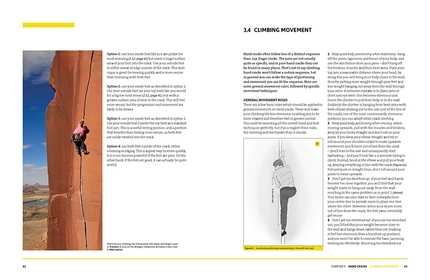
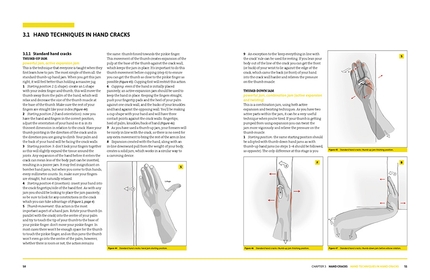
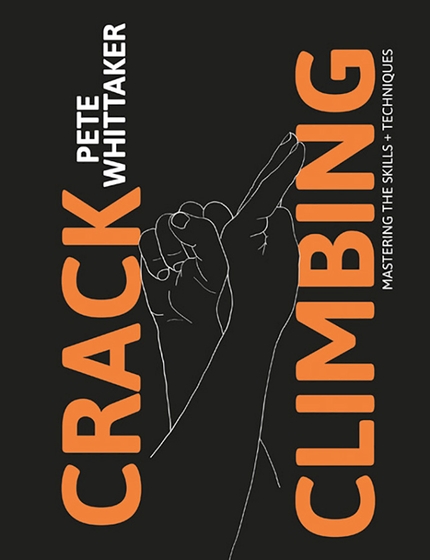
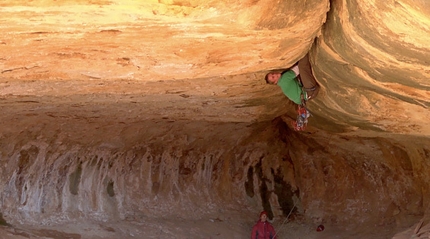
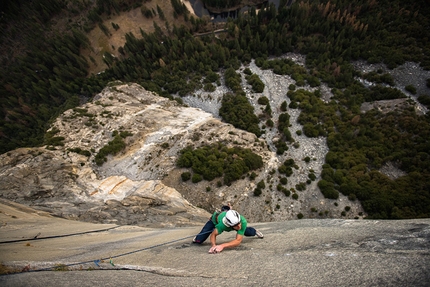
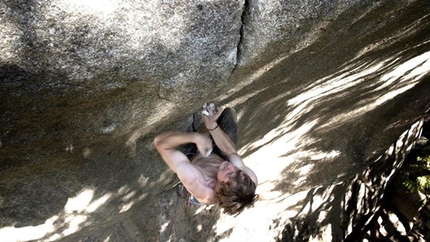
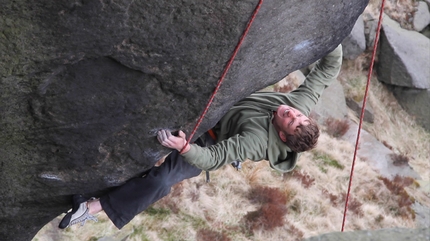
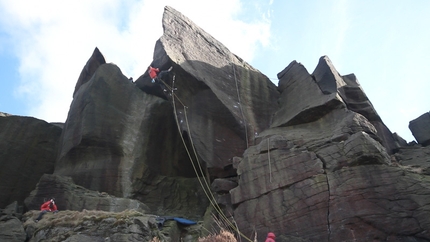
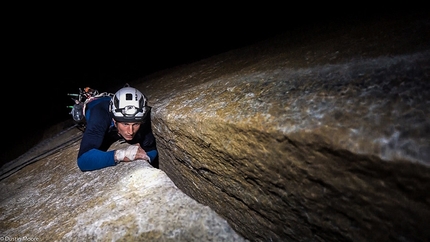
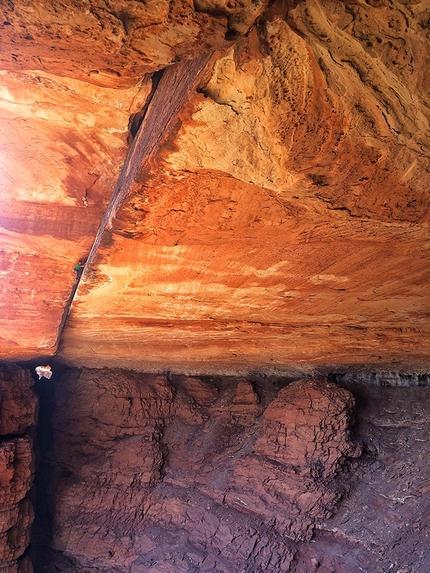
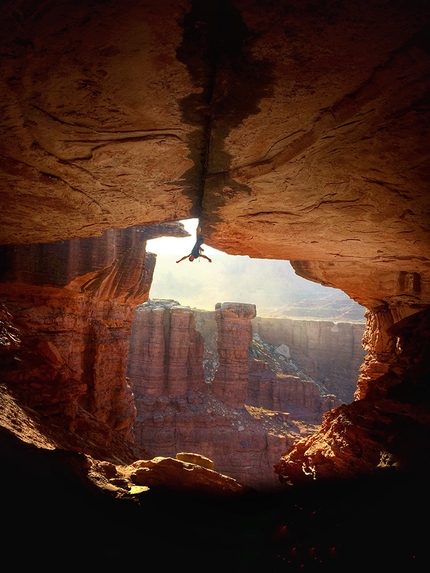
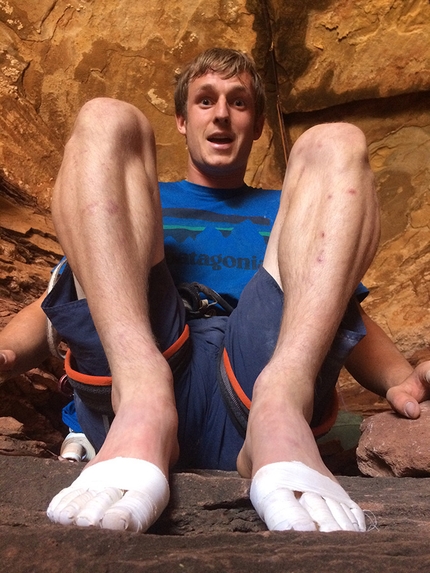
 See all photos
See all photos